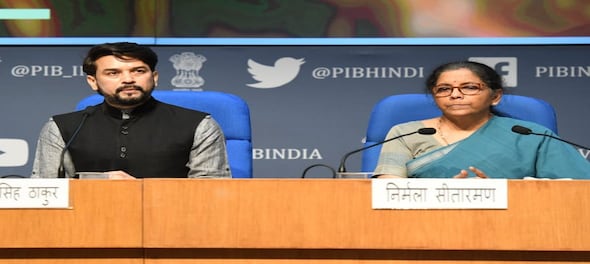
With constrained revenue position running well into next financial year and country's fiscal position under strain, the government would have no option but to limit its expenditure to come back on the path of fiscal consolidation and reduce its heavily enlarged deficit.
According to a report on the state of the economy by Motilal Oswal Institutional Services, the government would be able to narrow the fiscal deficit to 5.5 percent of GDP in FY22 from expected level of over 7 percent in FY21, but this would assume a 19 percent growth in total receipts in FY22 and an increase of just 5.6 percent in total spending by the Central government.
This indicates that primary spending (excluding interest payments) would grow just 4.6 percent in FY22 (v/s 6 percent growth in FY21), marking the second-lowest growth in four decades, the brokerage said in its report.
The finance minister will present the Union Budget 2021-22 on February 1 in this contained environment. As always, expectations are running high. However, the government's fiscal response in 2020 indicates certain inflexibility and the lack of resources to stimulate the economy, the report said.
Although there was no massive fiscal stimulus in CY20-various estimates put it between 1.5 percent and 2.5 percent of GDP, of which 0.7 percent of GDP was on account of food subsidies, which is unlikely to affect the fiscal balance-a significant shortfall in receipts likely led to the doubling of the fiscal deficit to 7 percent of GDP in FY21 (from the budgeted 3.5 percent), Motilal Oswal said.
The assumption (based on actual data available up to Nov'20) is gross taxes would decline 5.3 percent, total receipts would fall 12.4 percent, and total expenditure would grow 7.2 percent in FY21.
Besides these all-important macro numbers, the brokerage said that this year's budget would be tracked for the announcement in three areas: The lack of receipts has led to debates related to one-off cess/surcharge. However, the government may consider keeping the taxation regime unchanged, helping sustain and bolster the economic momentum.
The other area, the brokerage said, is that close monitoring would be done to see whether the Union Budget includes measures to revive residential real estate demand in the country. Also, It would be interesting to note whether the Government can continue to support the rural sector as much as it has in the past couple of years.
Lastly, the report said, while the government is expected -- as witnessed every year -- to grow its capital expenditure (capex) more than total spending, it is severely constrained by the low share (25 percent) of discretionary/non-mandatory spending. Furthermore, the centre's capex is only 5 percent of domestic investments in the country.
Check out our in-depth Market Coverage, Business News & get real-time Stock Market Updates on CNBC-TV18. Also, Watch our channels CNBC-TV18, CNBC Awaaz and CNBC Bajar Live on-the-go!


Lok Sabha Polls '24 | Rahul Gandhi in Rae Bareli, why not Amethi
May 4, 2024 9:43 AM
Supreme Court says it may consider interim bail for Arvind Kejriwal due to ongoing Lok Sabha polls
May 3, 2024 4:57 PM
10% discount on fare on Mumbai Metro lines 2 and 7A on May 20
May 3, 2024 2:40 PM

